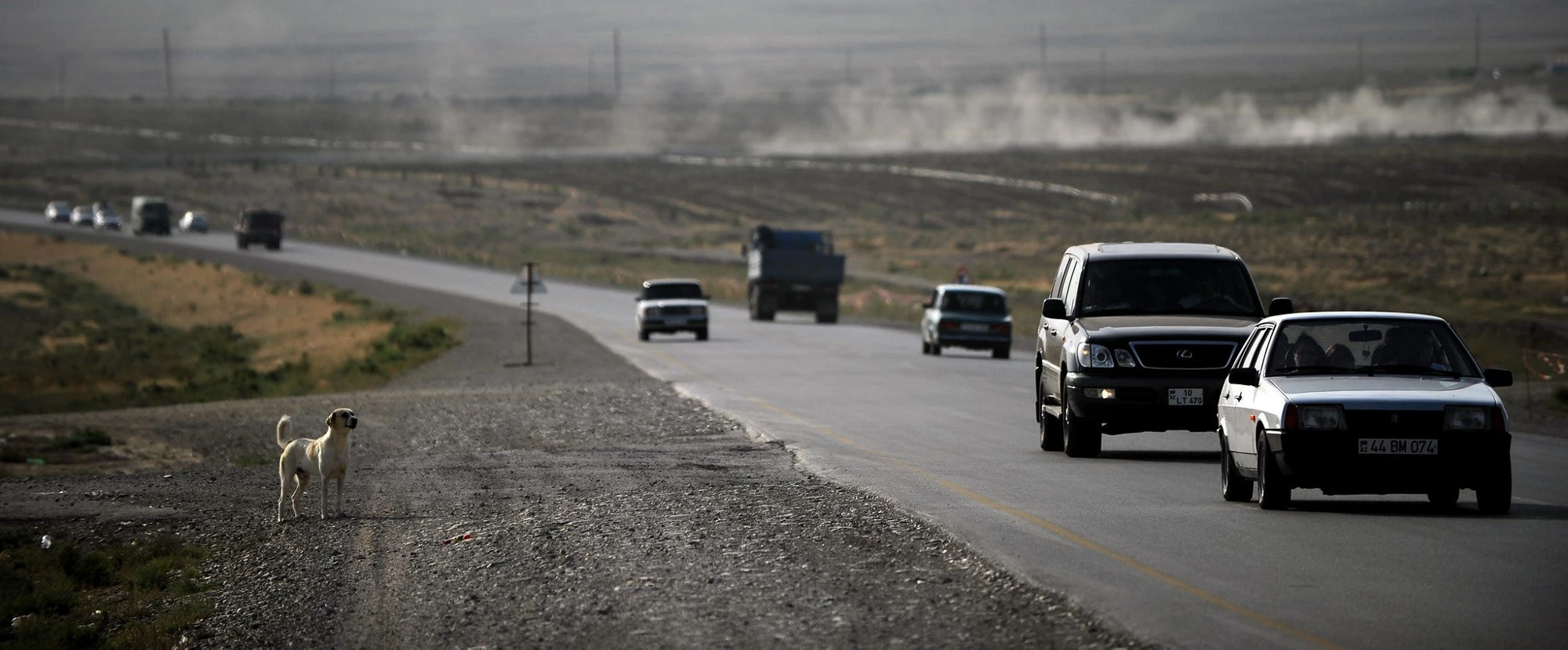 A photo of a road in Azerbaijan.
A photo of a road in Azerbaijan.
Road crashes happen in a moment but can leave lasting damage. This is a global problem with a high human and financial cost. Every year, approximately 1.35 million people are killed and 50 million seriously injured in road crashes around the world. According to the World Health Organization, the average fatality rate for road crashes per 100,000 people in the Europe and Central Asia (ECA) region is 14.4. That is nearly three times higher than the European Union’s average fatality rate of 5.1.
Road crash injuries burden public health care systems and cost low and middle-income countries the equivalent of 2-6% of their gross domestic product. The vast majority of fatalities occur in low- and middle-income countries, including those in ECA. Without a concerted effort, the number of road traffic deaths and serious injuries will continue to rise in the region as the fleet of cars and trucks grows.
A roadmap to safer travel
Encouragingly, many countries and cities around the world have been taking more decisive action to tackle the global road safety crisis, and there is ample evidence that their efforts are paying off. For a vast and diverse region like ECA – covering Eastern Europe and the Western Balkans to South Caucasus and Central Asia – the key to safer roads is identifying the specific road safety risks faced by each country.
These risks may vary across subnational regions, cities, and localities. However, there are some universal good practices and specific actions that can be applied to the entire region. Here are three:
-
A critical first step is making informed road safety decisions based on high-quality data. Collecting and analyzing data to determine where severe crashes are occurring and who is involved should be the starting point. Good data will enable authorities to identify high-risk locations and factors that require immediate attention.
-
Road safety policies and interventions must be rooted in evidence. Managing speeds, providing safe pedestrian infrastructure, and requiring the use of helmets by motorcyclists are some of the key measures incorporated in the world’s most successful road safety programs. Countries in the ECA region can easily tap into the wealth of available evidence on the effectiveness of various road safety interventions.
-
Adequate speed limits deserve a standalone mention. On roads with high interactions between pedestrians and motorized traffic, lowering speed limits to 30 km per hour has been found to result in an average increase of just one minute per journey while saving lives and preventing numerous injuries.
Effective road safety delivery requires an appreciation of the complex and multidimensional nature of the challenge at hand. For this reason, policymakers must ensure that road safety professionals are properly trained and have the necessary resources. With this in mind, we at the World Bank, together with our partners, are working with government counterparts to scale up the region’s road safety programs. We are assisting with financing, expertise, and data-driven strategy development, focusing on interventions that have proved to yield meaningful results in other countries.
Accelerating road safety improvements
In Serbia, the World Bank has worked on road safety for well over a decade across various projects, assisting with institutional reforms, strategy development, and open database development. We have also introduced innovative approaches, like the “Safe2School“ mobile phone app. Thanks to the long-term engagement, Serbia reduced its road fatality rate from 9.05 to 7 per 100,000 people between 2010 and 2021. But much more work needs to be done to meet the UN Sustainable Development Goal target (3.6) of halving the number of road traffic fatalities.
To accelerate improvements across the region, the World Bank in collaboration with the European Commission, has been supporting the Eastern Partnership Transport Panel, which facilitates the exchange of information and road safety best practices between Armenia, Azerbaijan, Georgia, Moldova and Ukraine. The aim is to identify common challenges, share lessons learned, identify quick wins, and work together towards longer-term goals.
In Tajikistan, where road crashes are the leading cause of death for those aged 5 to 29, it is estimated that investing $0.36 billion in safer road infrastructure would yield an economic benefit of $1.79 billion and save 681 lives per year. With support from the Global Road Safety Facility, a multi-donor fund hosted by the World Bank, we are focusing on rolling out safer roadside infrastructure in high-risk, hilly areas; promoting seatbelt use; and developing a long-term road safety strategy underpinned by sound data.
There are opportunities for substantial safety enhancements in other parts of the region too, including Kazakhstan, Montenegro, and North Macedonia. In each case, the goal is to promote evidence-based actions to prevent road traffic deaths and injuries.
Governments can drive positive change
Road safety interventions often fail due to a combination of lack of funding, know-how, implementation capacity, and political commitment. The first three need not be obstacles in ECA as the World Bank stands ready to provide funding and technical support to enable countries to design and implement effective road safety programs. Road crash fatalities and injuries are preventable, but governments need to be proactive and boost their commitments. Their citizens’ lives depend on it.



Join the Conversation